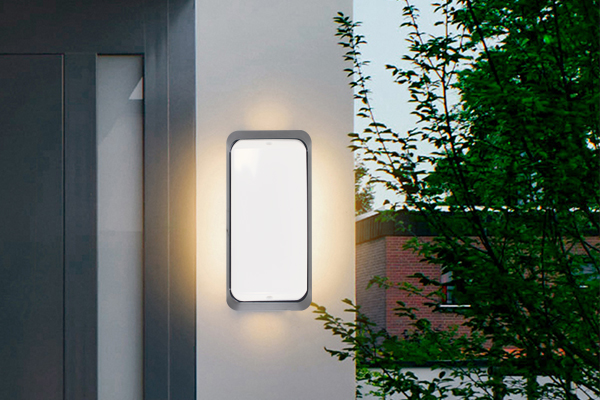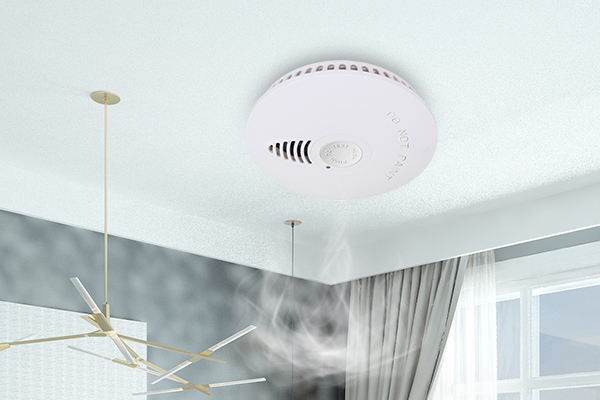Be jutiklių koks būtų pasaulis
Kai kalbama apiejutikliai, žmonės dažniausiai girdi daugiau ir mato mažiau. Tiesą sakant, vis labiau tobulėjant jutiklių technologijoms, jų taikymo scenarijai prasiskverbė į karines, energetikos, robotikos, automatinio valdymo, aplinkos apsaugos, transporto, medicinos ir chemijos, buitinės technikos ir nuotolinio stebėjimo technologijas.
Be to, nuotolinio stebėjimo technologija naudojama didelio masto objektams ir jų būsenoms aptikti dideliuose plotuose dideliu atstumu nuo lėktuvų, dirbtinių palydovų, erdvėlaivių ir laivų.
2. Application of jutikliai in robots
In places with high labor intensity or dangerous operations and some high-speed, high-precision jobs, robots have gradually been used to replace human jobs. But to make the functions of robots and humans closer, it is necessary to install visual jutikliai and tactile jutikliai on the robots, so that the robots can recognize and detect objects through vision, and produce pressure, force, sliding feeling and weight on objects through touch feeling.
3. Application of jutikliai in industrial automatic control systems
Jutikliai yra pagrindinė automatinio aptikimo ir automatinio valdymo grandis. Jei nėra jutiklio, kuris tiksliai ir patikimai matuotų pradinę informaciją (signalus ar parametrus), neįmanoma pasiekti automatikos nuo signalo išgavimo, konversijos, apdorojimo iki gamybos ar valdymo. Galima pastebėti, kad jutiklis yra būtinas automatinio valdymo sistemoje.
4. Taikymasjutikliaiaplinkos apsaugos srityje
Global air pollution, water pollution and noise have severely damaged the ecological balance of the earth and the environment on which we depend. In order to protect the environment, various environmental monitoring instruments made of jutikliai are playing an active role. Such as the use of biological jutikliai to monitor water quality, the detection of the amount of sewage in the sewage monitoring system, the identification of sewage components, etc., all use jutikliai to monitor.
5. Taikymasjutikliaimedicinoje
Sensors can be usedmedicinoje to perform difficult diagnosis on the surface and internal temperature of the human body, blood pressure, intracavity pressure, blood and respiratory flow, tumor, blood analysis, pulse and heart sounds, and heart and brain waves. It plays a role in a wide range of early diagnosis, early treatment, remote diagnosis and the development of artificial organs.
6. Taikymasjutikliaigabenime
Sensors are also widely usedgabenime. Sensors are used in vehicle transportation to detect the number of axles, wheelbase, vehicle speed monitoring, vehicle classification, dynamic weighing, toll station scales, red light shooting, parking area monitoring, and traffic information collection (road monitoring) ) And airport taxiways. In vehicles, it is not only limited to the monitoring of driving speed, driving distance and engine rotation speed, but also used for safety monitoring, such as car airbag systems, anti-theft devices, anti-skid control systems, anti-lock braking devices, electronic transmission control devices, Exhaust gas circulation devices, electronic fuel injection devices, and automobile "black boxes" have all been put into practical use.
7. Taikymasjutikliaikasdieniame gyvenime
Sensors can be seen everywhere in our daily lives. For example, jutikliai are used in household appliances: temperature jutikliai in refrigerators and rice cookers, temperature and humidity jutikliai in air conditioners, liquid level jutikliai in washing machines, and gas leak jutikliai in gas stoves. , Water meters, electricity meters, infrared remote controls in TVs and DVD players, light jutikliai in cameras, fuel gauges and speedometers in cars, etc.
1. Taikymasjutikliaiaviacijos erdvėje
In addition to the use of jutikliai to measure speed, acceleration, and flight distance, the spacecraft's flight direction, flight attitude, flight environment, the status of the aircraft itself, and the monitoring of internal equipment must also be detected by jutikliai, as well as the internal environment of the spacecraft (such as Humidity, temperature, air composition, etc.) must be detected by jutikliai.Be to, nuotolinio stebėjimo technologija naudojama didelio masto objektams ir jų būsenoms aptikti dideliuose plotuose dideliu atstumu nuo lėktuvų, dirbtinių palydovų, erdvėlaivių ir laivų.
2. Application of jutikliai in robots
In places with high labor intensity or dangerous operations and some high-speed, high-precision jobs, robots have gradually been used to replace human jobs. But to make the functions of robots and humans closer, it is necessary to install visual jutikliai and tactile jutikliai on the robots, so that the robots can recognize and detect objects through vision, and produce pressure, force, sliding feeling and weight on objects through touch feeling.
3. Application of jutikliai in industrial automatic control systems
Jutikliai yra pagrindinė automatinio aptikimo ir automatinio valdymo grandis. Jei nėra jutiklio, kuris tiksliai ir patikimai matuotų pradinę informaciją (signalus ar parametrus), neįmanoma pasiekti automatikos nuo signalo išgavimo, konversijos, apdorojimo iki gamybos ar valdymo. Galima pastebėti, kad jutiklis yra būtinas automatinio valdymo sistemoje.
4. Taikymasjutikliaiaplinkos apsaugos srityje
Global air pollution, water pollution and noise have severely damaged the ecological balance of the earth and the environment on which we depend. In order to protect the environment, various environmental monitoring instruments made of jutikliai are playing an active role. Such as the use of biological jutikliai to monitor water quality, the detection of the amount of sewage in the sewage monitoring system, the identification of sewage components, etc., all use jutikliai to monitor.
5. Taikymasjutikliaimedicinoje
Sensors can be usedmedicinoje to perform difficult diagnosis on the surface and internal temperature of the human body, blood pressure, intracavity pressure, blood and respiratory flow, tumor, blood analysis, pulse and heart sounds, and heart and brain waves. It plays a role in a wide range of early diagnosis, early treatment, remote diagnosis and the development of artificial organs.
6. Taikymasjutikliaigabenime
Sensors are also widely usedgabenime. Sensors are used in vehicle transportation to detect the number of axles, wheelbase, vehicle speed monitoring, vehicle classification, dynamic weighing, toll station scales, red light shooting, parking area monitoring, and traffic information collection (road monitoring) ) And airport taxiways. In vehicles, it is not only limited to the monitoring of driving speed, driving distance and engine rotation speed, but also used for safety monitoring, such as car airbag systems, anti-theft devices, anti-skid control systems, anti-lock braking devices, electronic transmission control devices, Exhaust gas circulation devices, electronic fuel injection devices, and automobile "black boxes" have all been put into practical use.
7. Taikymasjutikliaikasdieniame gyvenime
Sensors can be seen everywhere in our daily lives. For example, jutikliai are used in household appliances: temperature jutikliai in refrigerators and rice cookers, temperature and humidity jutikliai in air conditioners, liquid level jutikliai in washing machines, and gas leak jutikliai in gas stoves. , Water meters, electricity meters, infrared remote controls in TVs and DVD players, light jutikliai in cameras, fuel gauges and speedometers in cars, etc.
susiję straipsniai
Grįžti










